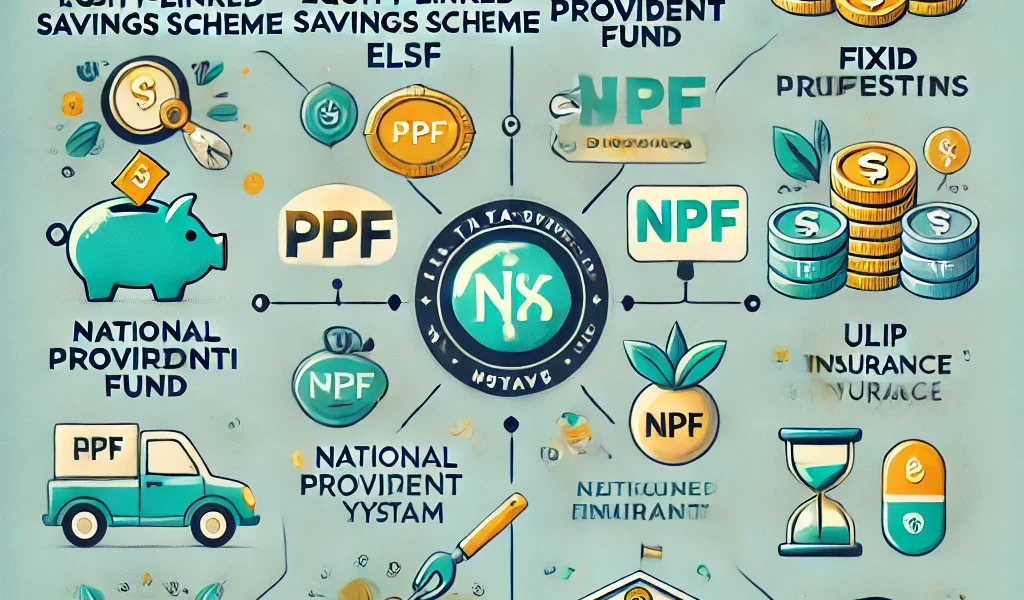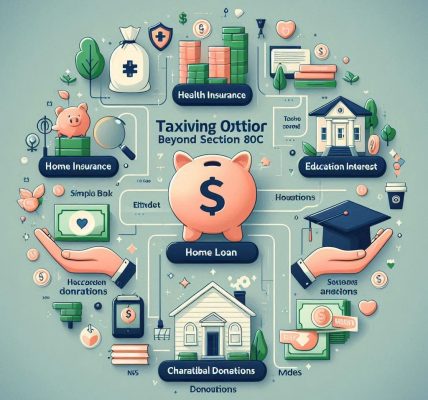Saving taxes legally is an essential part of financial planning. The government provides several tax-saving investment options to encourage savings while reducing taxable income. By leveraging these opportunities, you can optimize your tax outgo while growing your wealth. This guide explores the top tax-saving investments that every taxpayer should consider.
1. Equity-Linked Savings Scheme (ELSS) – Section 80C
ELSS funds are mutual funds with a tax-saving benefit under Section 80C of the Income Tax Act. These funds invest primarily in equities and have the potential for high returns.
Why Choose ELSS?
✅ Eligible for a deduction up to ₹1.5 lakh per financial year.
✅ Short lock-in period of 3 years, the lowest among tax-saving instruments.
✅ Potential for higher returns compared to other fixed-income tax-saving options.
Tip: Invest in ELSS through SIP (Systematic Investment Plan) to average costs and manage risks.
2. Public Provident Fund (PPF) – Section 80C
PPF is one of the safest long-term investment options with tax benefits.
Why Choose PPF?
✅ Offers a fixed return (interest rate set by the government quarterly).
✅ Eligible for deduction up to ₹1.5 lakh under Section 80C.
✅ Interest earned and maturity amount are tax-free.
✅ 15-year lock-in period with partial withdrawals allowed after 5 years.
Tip: Invest in PPF at the beginning of the financial year to maximize interest earnings.
3. National Pension System (NPS) – Section 80CCD(1B)
NPS is a retirement-focused investment scheme with additional tax benefits beyond Section 80C.
Why Choose NPS?
✅ Deduction of up to ₹1.5 lakh under Section 80C.
✅ Additional deduction of ₹50,000 under Section 80CCD(1B).
✅ Partial withdrawal allowed after 3 years for specific purposes.
✅ Tax-free maturity for 60% corpus; 40% must be used to buy an annuity.
Tip: Choose a mix of equity and debt to optimize returns and manage risk.
4. Fixed Deposits (Tax-Saving) – Section 80C
Tax-saving FDs offer guaranteed returns with tax benefits.
Why Choose Tax-Saving FDs?
✅ Eligible for ₹1.5 lakh deduction under Section 80C.
✅ Fixed returns with interest rates between 5.5% – 7%.
✅ Lock-in period of 5 years (no premature withdrawal allowed).
Tip: Interest earned is taxable as per income slab; opt for FD if you seek stability.
5. Unit Linked Insurance Plan (ULIP) – Section 80C & 10(10D)
ULIPs offer a combination of investment and life insurance.
Why Choose ULIP?
✅ Deduction of up to ₹1.5 lakh under Section 80C.
✅ Maturity proceeds tax-free under Section 10(10D) (conditions apply).
✅ Flexibility to invest in equity, debt, or balanced funds.
✅ Long-term investment with a minimum 5-year lock-in.
Tip: Compare different ULIPs before investing; charges may vary.
6. Sukanya Samriddhi Yojana (SSY) – Section 80C
SSY is a government-backed scheme for the girl child’s education and marriage.
Why Choose SSY?
✅ Tax deduction up to ₹1.5 lakh under Section 80C.
✅ Higher interest rate than PPF, usually above 7%.
✅ Interest and maturity amount tax-free.
✅ Lock-in till the girl turns 21 (partial withdrawal after 18 years).
Tip: Open an SSY account as early as possible to maximize benefits.
7. National Savings Certificate (NSC) – Section 80C
NSC is a fixed-income investment with tax benefits.
Why Choose NSC?
✅ Deduction up to ₹1.5 lakh under Section 80C.
✅ Fixed interest rate, compounded annually.
✅ 5-year lock-in period.
✅ Interest earned is taxable, but it qualifies for further deductions.
Tip: Suitable for risk-averse investors looking for stable returns.
8. Employee Provident Fund (EPF) & Voluntary Provident Fund (VPF) – Section 80C
EPF is a retirement savings scheme for salaried individuals, while VPF allows additional contributions.
Why Choose EPF/VPF?
✅ Employee’s contribution to EPF eligible for deduction under Section 80C.
✅ Tax-free interest and maturity (subject to certain conditions).
✅ VPF allows additional voluntary contributions with similar tax benefits.
Tip: Continue EPF for at least 5 years to avoid tax on withdrawals.
9. Health Insurance (Mediclaim) – Section 80D
Health insurance offers tax benefits while providing financial security against medical emergencies.
Why Choose Health Insurance?
✅ Deduction up to ₹25,000 (self & family); ₹50,000 if senior citizen.
✅ Additional ₹25,000 for parents; ₹50,000 if parents are senior citizens.
✅ Covers medical expenses, reducing financial burden.
Tip: Opt for a family floater plan to maximize tax benefits.
10. Home Loan Tax Benefits – Sections 80C & 24(b)
Buying a home with a loan offers multiple tax advantages.
Why Choose Home Loans?
✅ Principal repayment deduction up to ₹1.5 lakh under Section 80C.
✅ Interest deduction up to ₹2 lakh under Section 24(b).
✅ Additional deduction of ₹50,000 under Section 80EE for first-time buyers.
Tip: Consider joint home loans to maximize deductions for both co-borrowers.
Final Thoughts
Smart tax planning is essential to maximize savings while ensuring long-term financial growth. By investing in a mix of tax-saving instruments based on your financial goals and risk tolerance, you can legally reduce your tax burden while securing your future.
📌 Quick Recap of Top Tax-Saving Investments:
✅ ELSS for high returns
✅ PPF for risk-free long-term savings
✅ NPS for retirement security
✅ Health Insurance for medical safety
✅ Home Loan for dual tax benefits




